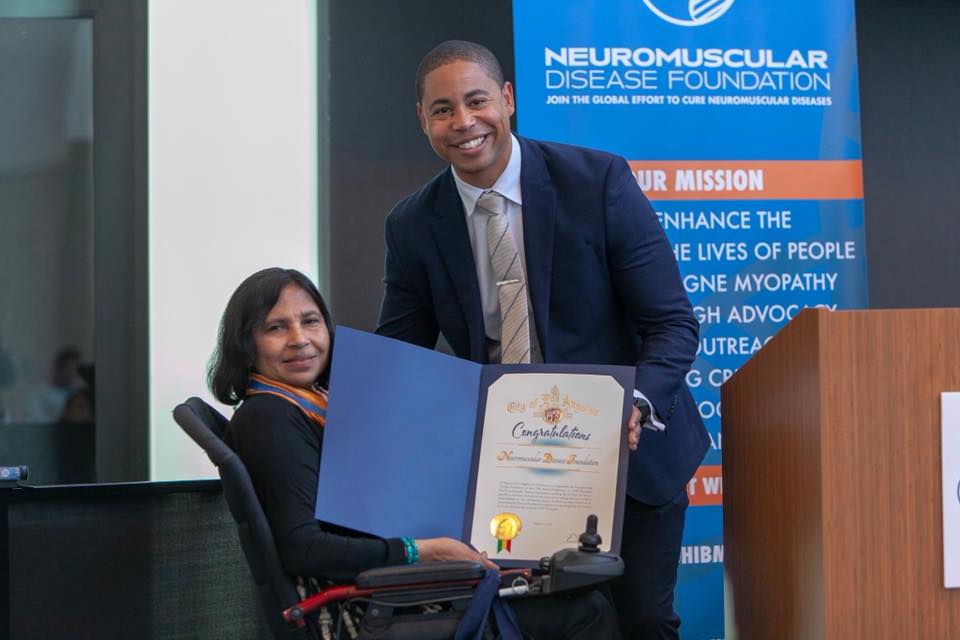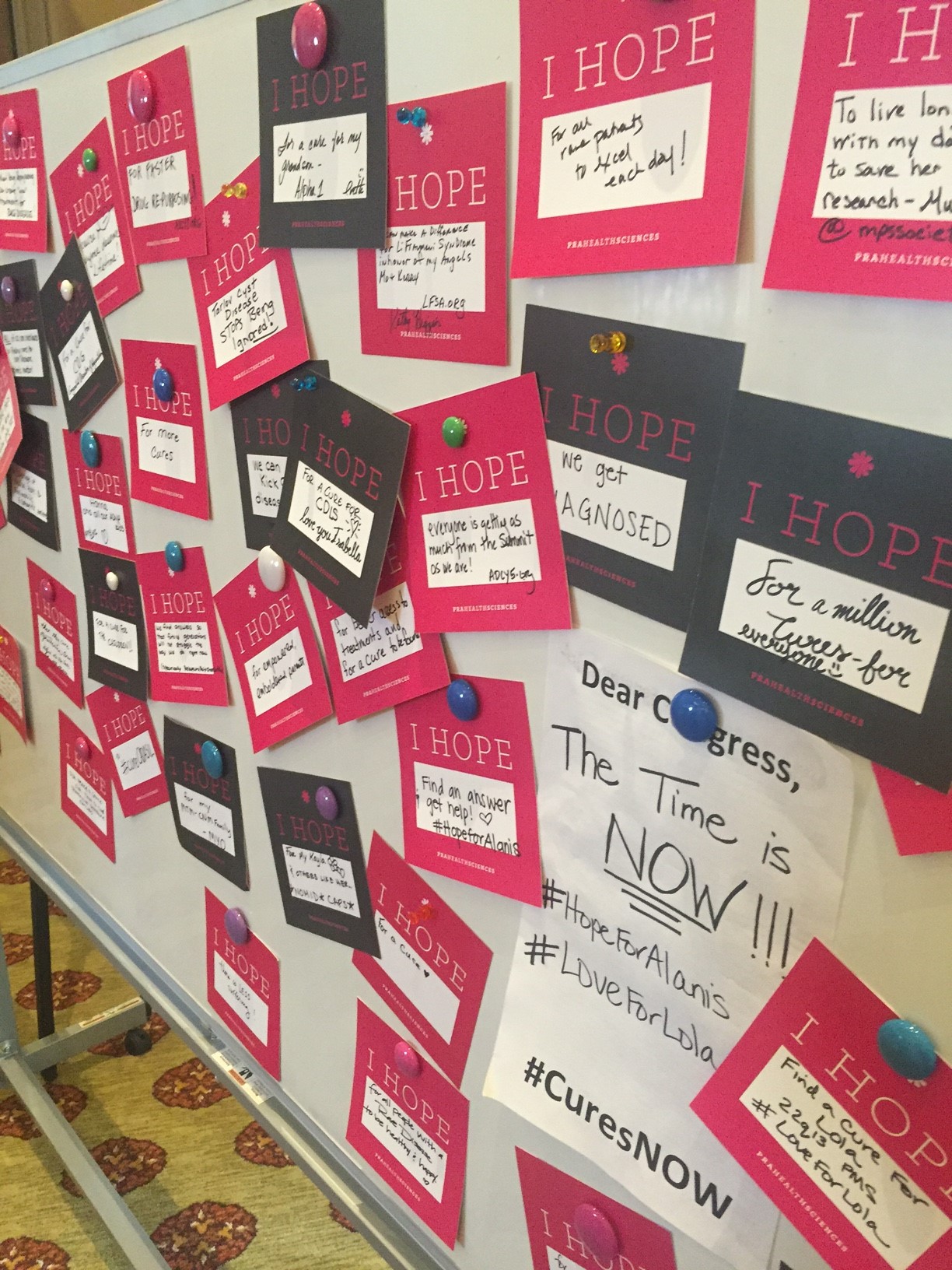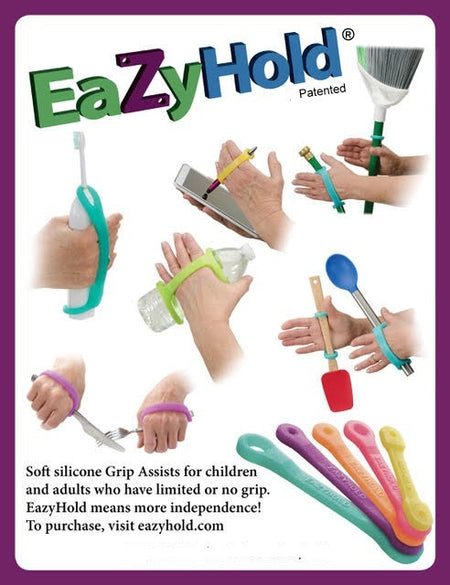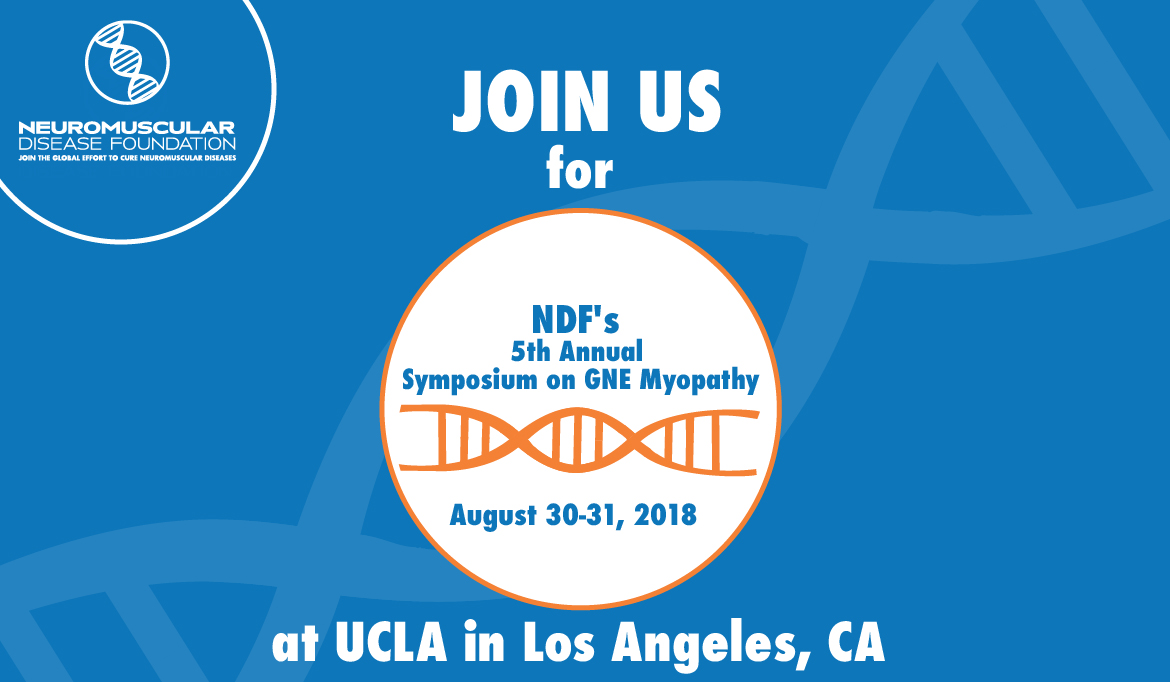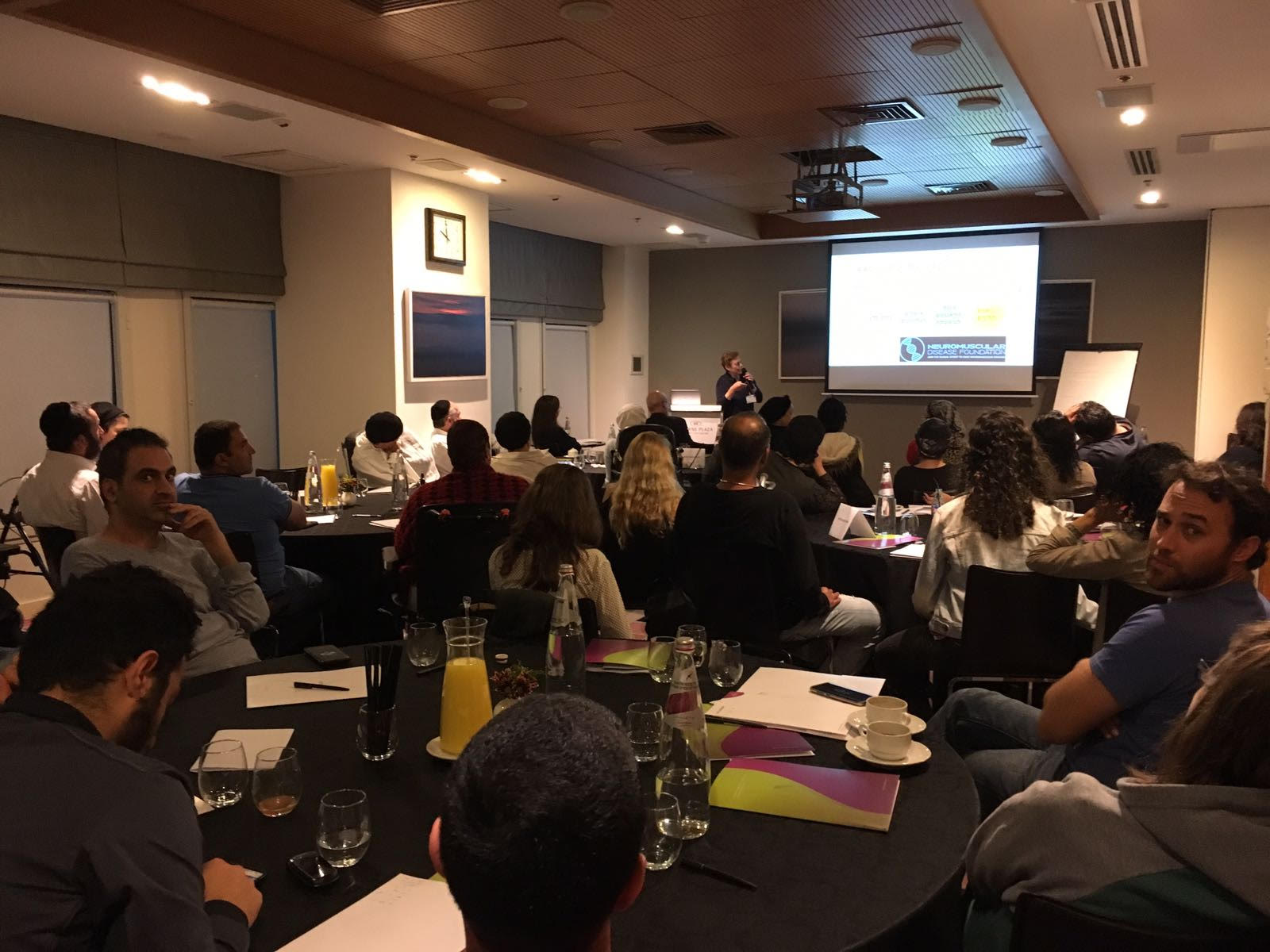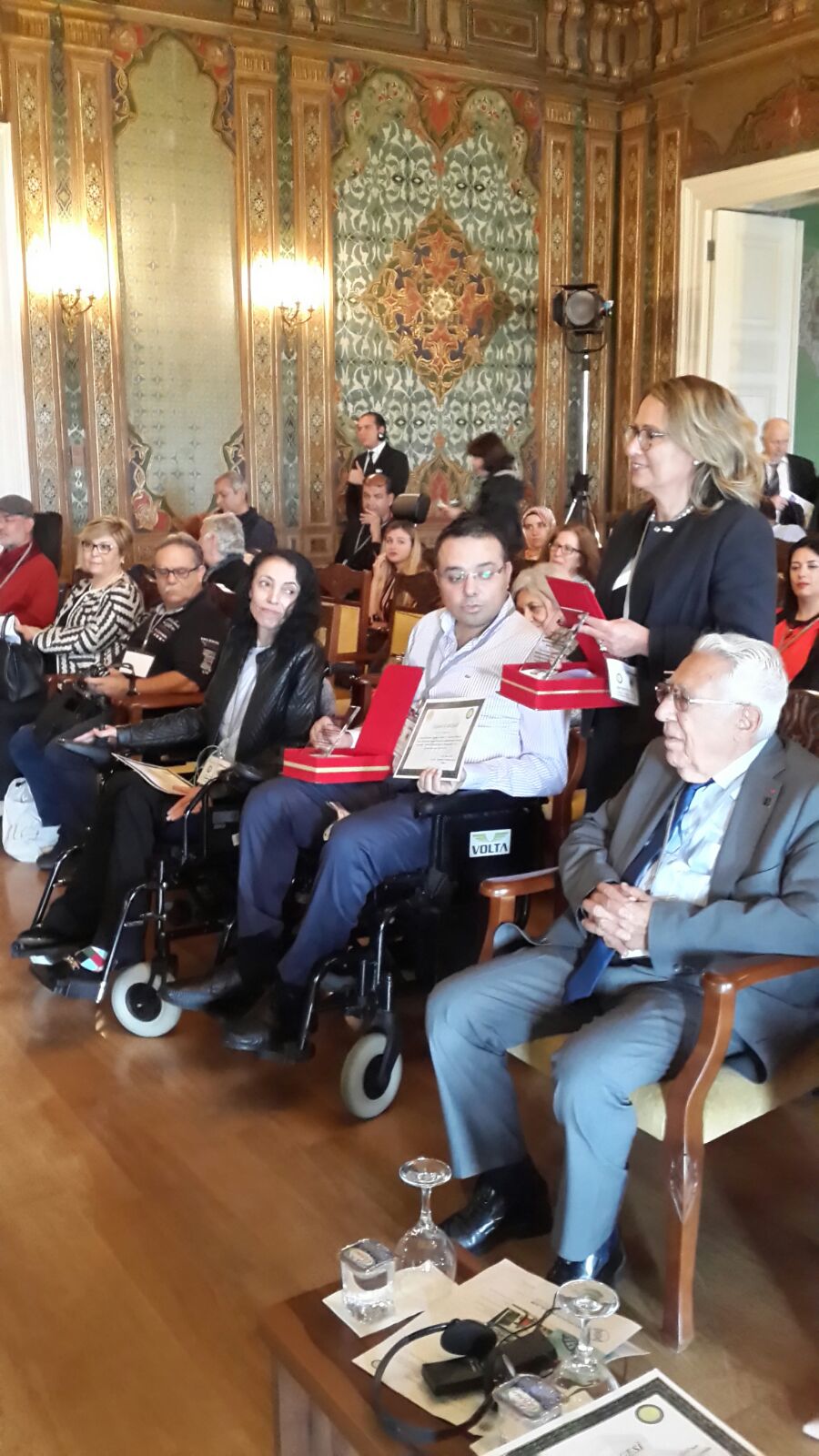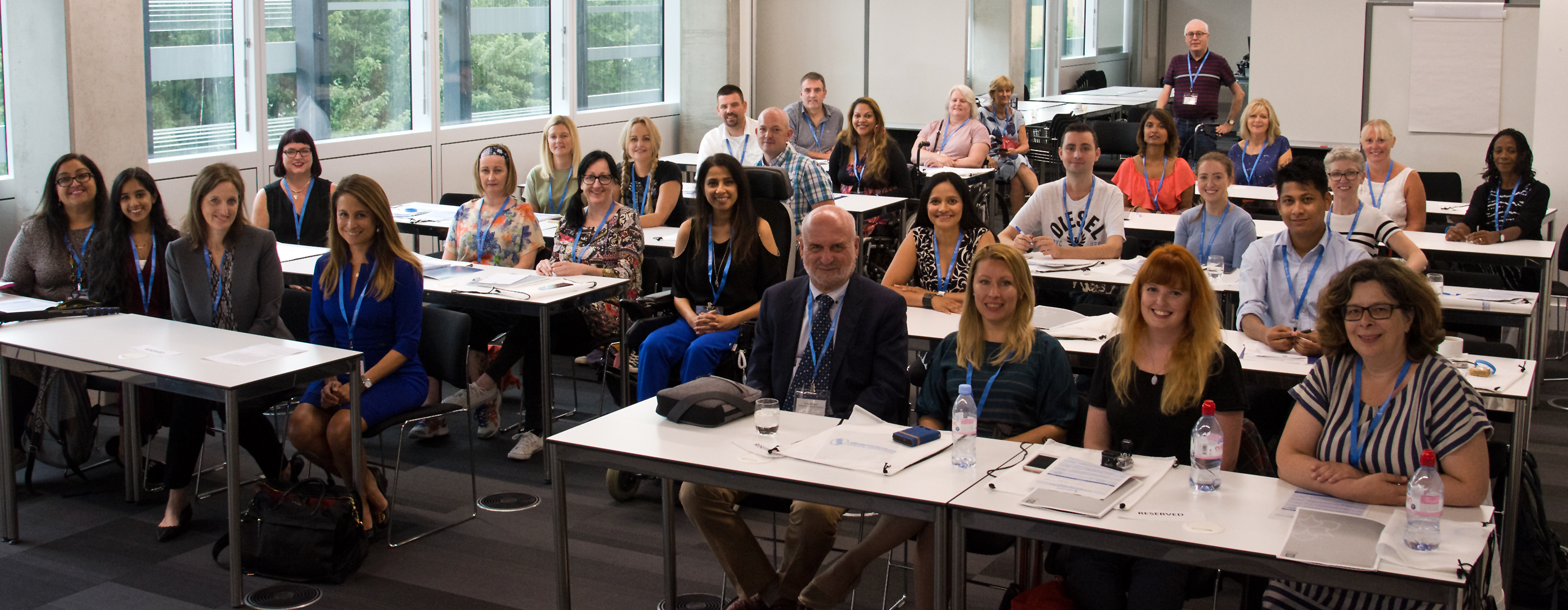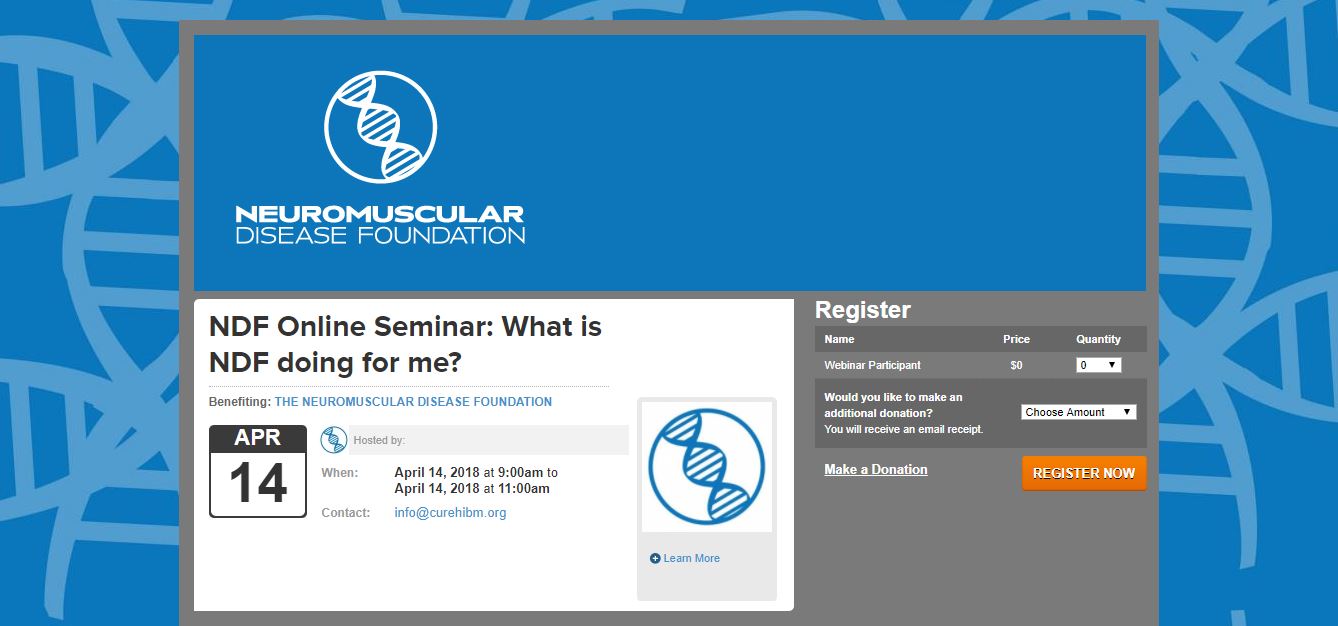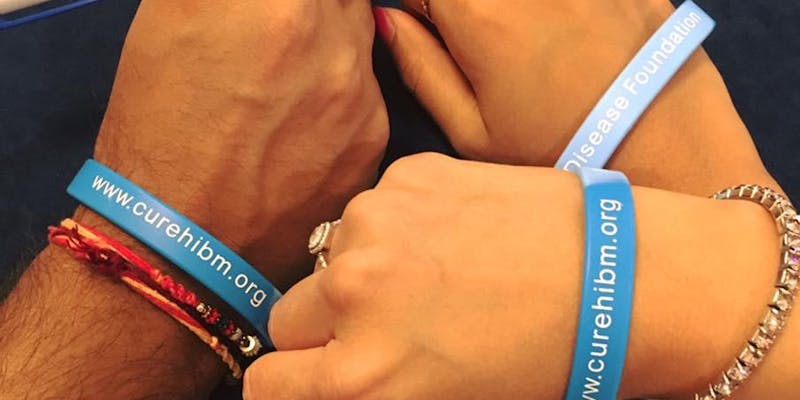Most people in the GNEM community ask questions such as the following: (1) Why is there not a cure yet? (2) What is the NDF doing to promote a cure? (3) When will the next ManNAc trial begin? (4) When will gene therapy begin? At the NDF Fifth Annual Symposium these questions and more questions were answered. There are over 7,000 rare diseases for which only 5% have approved therapies. Therefore we are quite fortunate that our disease (GNEM) has been attracting more doctors and researchers to collaborate with organizations like the NDF to find an effective cure.
The NDF has been asking: "Why is there not a cure yet?" It has been pursuing an effective therapy since its inception in 2006. This is the reason, the NDF has been having yearly Symposiums to connect the brightest scientific minds involved in GNEM research with GNEM patients face-to-face. The reason NDF exists is to get a cure for GNEM patients, and it has never faltered from its mission. A CURE and this pursuit continues to be its modus operandi (MO).
The focus this year consisted of a continuation from the last year's Symposium that brought researchers and patients together to continue exploring every avenue for a possible cure. Each year the researchers present their current findings and research. This Symposium was attended by patients from throughout the world specifically the Ivory Coast, Italy, Israel, Germany, India, Korea, Nepal, Canada, and the United States. Many patients received travel stipends, accommodations, and meals during this time.
Lale' Welsh, CEO of the NDF, commenced the Symposium with a brief update on all the projects that the NDF undertook last year and are continuing into this year. You may see the update at this video link.
Professor Sudha Bhattacharya from India, representing World Without GNE Myopathy, attended the Symposium; and she has written a summary of the events described below. I have added accompanying video links in addition to her summary.
A summary for the benefit of patients who could not
attend prepared by:
Rehabilitation strategies and advice for patients- (Video Link)
Dr. Galen Joe and Mr. Joseph Shrader from NIH demonstrated some of the exercises
for patients.
They mentioned the following
points that will help patients.
You should be aware of the barriers in your home/work place that affect your activity. You should ensure that you have safe mobility
and functioning in your environment.
- Posture is very important. It will help to maintain
your core strength which will give improved energy.
- You can work your core muscles by the following
exercise: sit straight without support; raise your arms till shoulder level and
breathe deeply.
- Simple exercise for core strength- Sit straight on a
chair. Rise up from chair. Repeat 10 times. If finding difficult you can place
a thick sponge or cushion on the chair before sitting
- Recommend aerobic/cardio activity for at least 150 minutes
per week. It should be spread out during the week rather than exercising
occasionally. Regular exercise is recommended at the level suitable to each
individual.
- Exercise precautions: Do not overload any muscle.
Train at sub maximal intensity. Important not to over use any muscle. Exercise
and condition all muscles- not just the weak ones. While exercising think of
groups of muscles rather than individual muscles.
- Foot braces should be of light material so that foot
comes down easily when you take a step.
Regarding Therapy for GNE Myopathy
ManNAc trial by NIH-
Phase 3 trial is planned to
start from beginning of 2019. Ms. Kennan
Bradley (NIH) will be handling it.
International patients can
also register. Write to Kennan Bradley for details (kennan.bradley@nih.gov) Patient screening for the
trial will start in the beginning of 2019.
Objectives of phase 3 trial-
- To measure whether progression is slowing down
- Long term safety
- Evaluate effect on physical function and activities of
daily living as noted by the patients
- 4gm ManNac x thrice daily
will be given in the trial. It will be implemented through NeuroNEXT.
The
investigators are Dr. Amato (Harvard) and Dr. Nuria Carrillo (NIH). Pharma Company
partner for the trial is- Leadiant Biosciences
Duration of the trial will
be 24 months. 51 patients will be on the trial, of whom 17 patients (33% ) will
be on placebo (patients on placebo do not receive drug).
Inclusion criteria- Those
patients are eligible for whom both GNE mutations are known. That is, the two
GNE mutations which each patient has, are both known. Genetic test should be
certified.
End point- Quantitative
muscle strength (QMA) will be measured to know how well the drug worked.
The analysis is regarding
whether there is a slowing in rate of progression
Nancy Parsons (representative from Leadiant
Biosciences, the Company partner for the trial) (Video Link)
She described the experience
of their company in developing drugs for genetic disorders. NIH had approached
them to bring ManNAc to patients. They have looked into manufacturing process
of ManNAc, and how to optimize it. They will also design the trial to meet FDA
guidelines. (FDA is the US regulatory body that approves clinical work and new
drugs).
Leadiant also looks into
pricing, and that the drug should be available to each patient. Will look at
reimbursement policy (This would perhaps be relevant for US patients).
Data from ManNAc phase 1 and 2 studies already
completed by NIH (Video Link)
Patients were
given 3g, 6g, and 10g ManNAc (each dose), twice daily. 6g showed better result
than 3g, but higher dose of 10g did not show better results than 6g.
Phase 2 trial was
for 30 mth. It has just concluded.
MRI-guided
muscle biopsies were taken in phase 2. These were examined and showed
improvement in patients taking ManNAc.
They measured
disease progression by MRI, functional tests, and patient-reported outcomes. The
statistically analyzed, detailed results will be available by Dec 2018.
Some conclusions
from phase2-
ManNAc did not
show any adverse side effects (except complaints with digestion, which were
quite common). It was generally well tolerated by patients.
Taking
a single high dose of ManNAc is not as beneficial as taking multiple smaller
doses. They recommend 4g, thrice daily rather than 6g, twice.
Gene Therapy-
The consensus in the meeting
was that Gene therapy is the most promising mode of treatment for GNEM and
deserves to be pursued urgently. We need robust funding to develop the
technology, test it and obtain FDA approval. One can expect a minimum of seven
years for FDA approval for drug use, after we start the work. Work has to be
started fresh since the earlier work done by Jerry Mendell is discontinued.
Lale Welsh (CEO, NDF) (Video Link) informed that they have commitment of $2.5 million
from anonymous donor as matching grant to be used only for gene therapy. Matching
grant means they will have to raise funds ($2.5 mn) of their own to get this
grant. This money will be used for gene therapy studies for phase 1. After that
it will be taken up by biotech/pharma company. They are in touch with companies
like Sarepta.
The study has to be
carefully designed with the help of experts so that it meets the requirements
of FDA. Otherwise approval will not be granted for clinical trials. It is not
clear to me exactly who will be conducting this study.
Other Studies-
Dr. Madhuri Hegde (Emory Univ., USA and Perkin-Elmer) (Video Link)
She will be doing whole
genome sequencing (WGS) of 100 GNEM patients. (WGS means studying the DNA
sequence of ALL the genes and not just the GNE gene alone). The idea is to
understand whether any other genes (other than GNE) are important in giving the
symptoms of GNE myopathy. This is because patients differ a lot in disease
progression and symptoms. Even siblings of the same family show difference in
disease severity and progression. It could be that other genes have an effect.
Dr. Monkol Lek and Dr. Angela Lek (Yale Univ., USA) (Video Link)
They will be collecting patient
skin samples to do RNA sequencing. This will give them information about the
differences between GNE myopathy patients and healthy individuals in terms of
their RNAs. If any RNAs are found which are clearly different in patients, that
is, their levels may be increasing or decreasing in patients, these can be
useful to look at disease progression, and to monitor future therapies.
They will also do WGS (DNA
sequencing) from patient blood samples.
Amy Curran (GNEM patient) and Jonathan Pizzi (Program Managers, NDF)
They gave useful tips for
patients. They gave suggestions about nutrition, and about gadgets that can
help patients to negotiate daily tasks. Some examples are as follows. Further
information on these gadgets is available on the Internet.
- EazyHold (Kerry and Merrily) from The EazyHold company were present to demonstrate assistive implements –made of silicon and helps to hold small
or large objects
- Moving Life makes a foldable scooter for mobility
- Walkers – Nitro Euro - rollator
- In the kitchen can use Multi Opener which is 5-in-1 to
open bottles, cans, jars etc.
- Bed - ProBed which can help patients turn sides.
- Bathroom - to make the floor less slippery you can put
small floor tiles- 1 inch x 1 inch, or 1 inch x 2 inch. ShowerBuddy is a user
friendly accessory for the shower.
- Living area - can use Clamp Champion- a large clamp
that can be fit anywhere- say on the arm of your sofa. You can fit your laptop
or tablet or phone to it while sitting on the sofa.
- Mount n Mover- To mount devices on wheel chair, bed,
table etc.
- Alber Scalamobil- is a stair climber for wheelchairs.
- For details, visit adapts.org
In addition to Dr. Bhattacharya's summary, there were private sessions for patients and caregivers with a psychologist and a social worker respectively. There was a separate lounge with snacks and refreshments available for all patients. This was a very helpful and meaningful addition to the Symposium this year, as patients and caregivers were then able to meet together prior to the Symposium.
After all the sessions of the first day, there was a reception/dinner accompanied with live music. At this dinner the NDF enlisted four more Certified Patient Advocates from Germany, India, the Ivory Coast, and Israel.
Besides the many events of the Symposium, we were able to see through the eyes of Saskia, a GNEM patient from Germany a video log of her trip to Peru. Here is a link to her Jungle Expedition:https://www.youtube.com/watch?v=QA4x2vSkUjQ&feature=youtu.be
Also, Dr. Sepideh Tabibian presented Holist Approach for Coping with GNEM. Here is a link to her presentation:
https://www.facebook.com/NDF.HIBM/videos/vl.2159531020989886/500981303706758/?type=1
For the past two years I have been attempting to get an official from the City of Los Angeles to attend the NDF Symposium in order to make a declaration on behalf of GNEM patients. This year, the offices of Mayor Garcetti were kind enough to send Mr. Jasson Crockett from the Department of Economic Development to present the NDF with a Certificate of Congratulations for NDF's dedication in finding a cure for GNEM. In conclusion, I want to express my sincere gratitude to all the GNEM patients (my dear friends), their families, and the researchers who attended this amazing Symposium. Here is a video link for this.
Upcoming Events within our GNEM community:
1. WWGM is participating in Airtel Delhi Half Marathon on October, 21, to build awareness around GNEM and to raise funds towards research and treatment
For more, please visit: https://www.facebook.com/SupportGNEMyopathy/

2. NDF Gala for the Arts: Join the NDF on November 11, 2018 to celebrate a unique evening or art and music.
The NDF is looking to raise funds to support a $2.5 million challenge grant provided by a private foundation. The funds raised will support our efforts toward therapies for GNE Myopathy. For more, please visit:http://curehibm.org/

